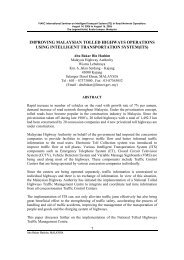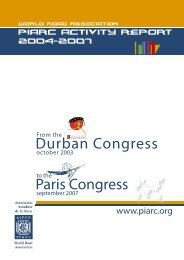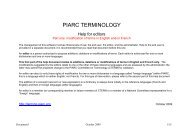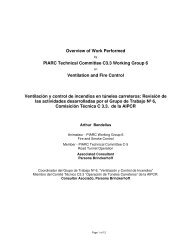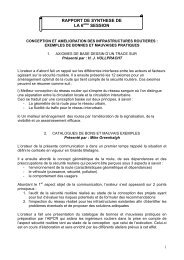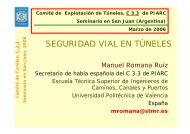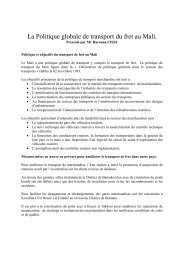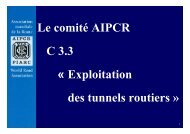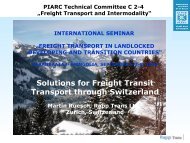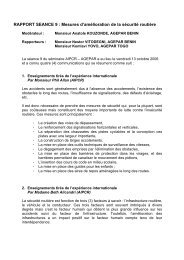General proceedings - Association mondiale de la Route
General proceedings - Association mondiale de la Route
General proceedings - Association mondiale de la Route
Create successful ePaper yourself
Turn your PDF publications into a flip-book with our unique Google optimized e-Paper software.
Highlights of the Presentation:<br />
• Corruption is not only bribery, but fraud, collusion, extortion and other simi<strong>la</strong>r offences.<br />
• A survey carried out by Transparency International showed that the Construction sector is<br />
perceived to be the most corrupt industry worldwi<strong>de</strong> ahead of <strong>de</strong>fence and extractive<br />
industries.<br />
• Both the World Bank and the European Union Commission estimate corruption at 5% of<br />
the World’s GDP. Losses are estimated to be 1 trillion United States Dol<strong>la</strong>rs in a year.<br />
• Effects of corruption can be extremely damaging, resulting in projects that are<br />
unnecessary, over <strong>de</strong>signed, overpriced, <strong>de</strong>fective and dangerous.<br />
• Damage done by corruption in two aspects: Socially and economically.<br />
• Many people believe that the cost of corruption in construction projects ranges between 5<br />
and 50 percent of the project cost. Value of World’s construction out put is estimated to<br />
be US $ 5 trillion. If construction losses are conservatively estimated at 5%, loses in the<br />
construction sector could be US $ 250 billion. This is misappropriation of huge sums of<br />
money that could be spent on poverty reduction, health and education.<br />
• Corruption can occur in the i<strong>de</strong>ntification phase, funding phase, ten<strong>de</strong>r phase, in<br />
execution and maintenance.<br />
• There is a need for ant-corruption actions due to following reasons: Corruption on<br />
construction projects is complex; it can occur during any phase; it may involve a range of<br />
participants; It can take p<strong>la</strong>ce at all contract levels. Therefore, anti-corruption measures<br />
must impact on all these phases.<br />
• Project Anti-Corruption System (PACS) is a system with combination of tools. It applies<br />
only to projects. When PACS is applied there is no interference with procurement or<br />
other procedures.<br />
• PACS is avai<strong>la</strong>ble for use and can be adapted to suit project requirements. Whole, or<br />
part, or individual modules of PACS can be used<br />
• PACS is easy to operate; all tools are provi<strong>de</strong>d and instructions on how to operate PACS<br />
are provi<strong>de</strong>d<br />
• PACS is applied during all the stages of the project execution: that is Ten<strong>de</strong>r Phase;<br />
Execution Phase<br />
• During implementation of PACS, the project owner engages an In<strong>de</strong>pen<strong>de</strong>nt Assessor.<br />
There is also an Anti-Corruption Agreement that is signed by Project Owner and<br />
ten<strong>de</strong>rer. It applies for duration of project involvement. It has anti-corruption warranties.<br />
Also other key issues are addressed such as co-operation with In<strong>de</strong>pen<strong>de</strong>nt Assessor;<br />
Transparency; Anti-Corruption Programme and Criminal and contractual penalties.<br />
• The version of PACS is being published as a “Consultative Edition”. The consultation<br />
period ends on 30 th April 2007. The First Edition of PACS will be published in mid-<br />
2007.<br />
• PACS is written by Catherine Stansbury and Neill Stansbury who are both <strong>la</strong>wyers, each<br />
with over 20 years’ experience working in the international construction industry. They<br />
have in total been involved in over 75 major construction projects in 20 countries.<br />
49



